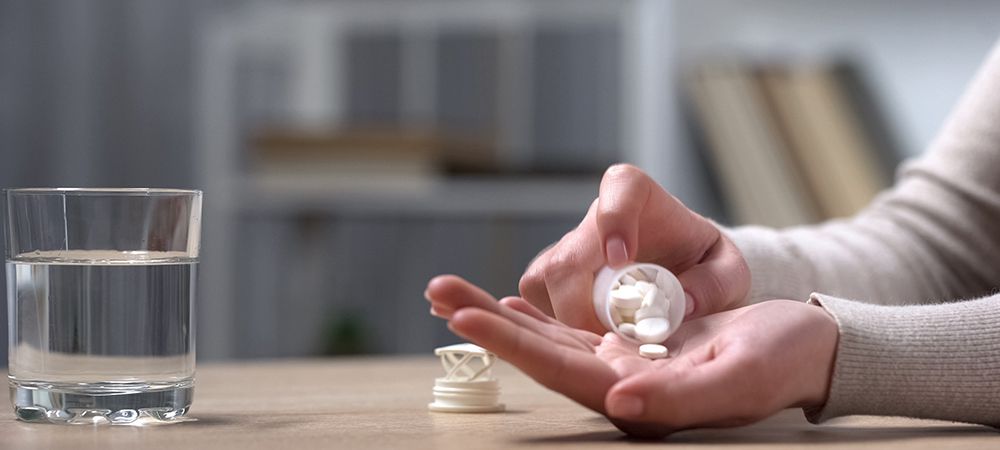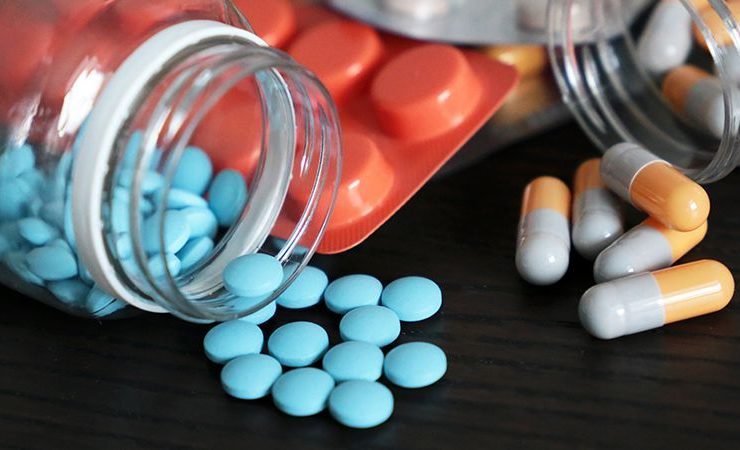How to Deal with Prescription Sedative Withdrawal Symptoms
Prescription sedative withdrawal may be a surprising experience for many. You may just be getting to grips with the idea but it is possible to develop an addiction to prescription sedatives. When this happens, any attempt to stop using these medications will come with withdrawal and accompanying symptoms.
Naturally, medical consultants prescribe sedatives to help with your sleep pattern, pain, tension and anxiety problems. However, these drugs also trigger the release of dopamine in the brain. Since dopamine comes with feelings of pleasure and excitement, your body will soon start to crave it. This is what leads to abuse and eventual addiction.
This chain of events is why Health Canada regulates the use of prescription sedatives. Despite their continued efforts, information about prescription sedative addiction is scarce. Some people only find out about it when they start to experience withdrawal symptoms.
When you stop abusing prescription sedatives, you may develop severe health symptoms. It is at this point that information about how to deal with prescribing sedative withdrawal becomes important.
In this guide, we’ll explore the signs and symptoms of prescription sedative approval. After that, we’ll provide a rundown of how to manage withdrawal for prescription sedatives.
How to Recognize Prescription Sedative Withdrawal
The only disadvantage of prescription sedatives drugs is their addictive property. For most of us, we hardly doubt a drug that comes from a trusted medical source. So, we want to keep to that drug prescription as much as we can. However, while doing that, there’s a high chance you may develop a short form of dependence.
Because this drug comes from a medical pro, it’s hard to accept that addiction may be in the picture. To uncover the need for prescription drug addiction treatment, look out for the following signs and symptoms.
First stage
The first stage of withdrawing from sedative drugs occurs only a few hours after the last use. It’s even possible that you didn’t intentionally stop the sedative drug. Perhaps you forgot to take your pills with you on a trip. The primary symptoms of this stage are anxiety, sleeping problems, and blood pressure problems.
The symptoms of first-stage sedative withdrawal are very similar to health conditions that cause a need for sedative drugs. As such, a sizable percentage of patients ignore the signs and get more drugs. However, the safest option is for you to undergo a comprehensive detox. Failure to recognize withdrawal at this stage can lead to dependence.
Second stage
Of course, this stage is more dangerous than the first stage of withdrawing from prescription sedatives. The signs of this stage include a nauseous feeling, high blood pressure, and hallucinations. If you use prescription sedatives and have ever felt any of these symptoms, you may need a rehab and detox program.
Third stage
The third stage of prescription sedative withdrawal comes with extreme symptoms. At this stage, you may find it hard to identify your close friends and even some objects.
Related Article: Are Prescription Sedatives Addictive?
How to Manage Prescription Addiction Withdrawal
Becoming an addict to a prescription drug is not your fault. However, when you notice the dependence, you need to break free quickly.
To do this, you’ll need to go through a detox stage that comes with unique symptoms. Here’s how you can manage prescription drug withdrawal;
Detoxification
In most addiction treatment centres, detoxification is usually the first step. Detoxification means clearing up your body system of harmful substances. For prescription sedative withdrawal, detoxification helps you remove harmful substances in your body — including the sedatives.
However, that doesn’t mean detoxing is easy, and neither is detoxing a total cure for addiction. Detoxification is only the first stage of the treatment for prescription drug withdrawal. Depending on the level of withdrawal for prescription sedatives, you’ll still need further attention in the form of therapy and counselling.
Different medical facilities have peculiar processes for detoxification. These processes may change based on experience, expertise and patient behaviour. Some rehab centres will prefer to detoxify you in their hospital. While for some other hospitals, they will only keep you at their facility if you’re in critical condition.
Essentially, the detox process follows this process. A medical professional will check the extent of the prescription sedative withdrawal symptoms, then prescribes drugs. After that, you’ll be put under strict monitoring to manage your reactions to the withdrawal process.
Prescription drug rehab
Detoxification is not the end to your prescription drug withdrawal. How your recovery will go depends on the extent of your sedative dependence. If you only show the stage one symptoms of dependence, maybe close supervision may be enough. However, if you exhibit dangerous symptoms, you’ll require more intensive care.
There are two major programs for treating prescription drug addiction — inpatient and outpatient treatment. For the outpatient treatment, it means you’ll only visit the rehab centre at scheduled intervals.
Mostly, these appointments will be used to confirm that you are in stable condition. They may also include counselling and therapy sessions. Also, your home and work environments will be set up to give you the necessary support for treatment.
For an inpatient prescription sedative rehab program, you’ll be living on rehab grounds. This means the addiction is critical and needs special attention.
It can also mean your home environment isn’t conducive for recovery. As such, it will be the responsibility of the addiction treatment services to take care of your health, treatment, accommodation and living needs.
Eat good food
One of the best medicines you can give your body is a balanced diet. Healthy eating is a great way to help yourself out of prescription drug addiction. Most of the withdrawal symptoms will affect the flow of nutrients in your body. Therefore, it’s in your best interest to replace them immediately.
When you eat healthy foods like proteins, vitamins and vegetables, you’ll get the vital nutrients your body needs. That way, your body will have more strength to fight through prescription sedative withdrawal. Cooking and eating good food can also distract cravings that come with withdrawal.
Sleep properly
Of course, you know that symptoms of prescription sedative withdrawal include sleep disorders and anxiety. As a result, you need to make conscious efforts to try to sleep properly. It’s not going to be easy in any way, but it’s necessary. So, if it means getting help, please do.
You can draw up a perfect sleeping structure for yourself which you must follow. For example, you can set your alarms for 8 pm every night. You may not sleep immediately, but try all you can to sleep at 9 pm. That means you’ll have to drop your phones and other distractions.
Also, try to perform all your strenuous activities in the early hours of the day. So, at night, your body will be calm enough to sleep. You may not sleep immediately in the first few weeks, but don’t stop! When you keep to this routine, your body system will start to adapt to the change.
Exercise well
When you exercise, your brain releases some substances known as endorphins. These substances help your body system to maintain chemical balance in your body. In turn, the chemical balance restores normalcy in the body system. So, if you’re thinking of how to manage withdrawal for prescription sedatives, exercise is a great practice.
Naturally, exercise helps you reduce your stress, anxiety, and tension levels in your body system. So, you can even try regular exercise if you feel anxious or have a sleep disorder.
Reports from the NCBI show that regular exercises help with treating prescription drug addiction. This report explains how exercising helps to reduce your drug cravings. In doing so, it becomes easier to manage the withdrawal process.
Join a support community
There are several support groups you can join to aid your recovery from prescription drug addiction. These groups help by being a source of proven tips to help you through your recovery. Moreso, you get to see and relate with people who are experiencing the same issues as you.
Therefore, you can connect with them and encourage yourself. When you feel like giving in to the cravings for the sedative drug, your support group can help. A support group offers you a healthy wholesome environment for recovery.
Related Article: Drug Abuse
Why Do Most People Get Addicted to Prescription Drugs?
Go Through Withdrawal with Prescription Drug Addiction Services
Prescription sedative withdrawal can come with “deceptive” symptoms. If you can detect these symptoms early enough, you may have a shorter detox program to go through. However, that doesn’t mean it’s impossible to treat sedative addiction when the symptoms worsen.
What you need is the proper medical help and attention. After that, you can take some personal steps like exercising to help your recovery. However, it’s best to pay attention to the symptoms and treatments as we have discussed above.
Here at Inspire Change Wellness Addiction Treatment Center for Men, we offer a comprehensive detox and treatment program for prescription sedative addiction. Together, we can chart a course for withdrawal that’ll be safe and easier to manage. Contact us today to discuss your options.





